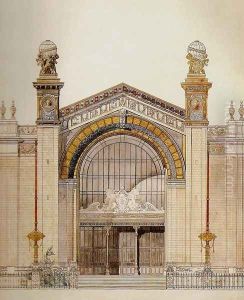Jean-Camille Formige Paintings
Jean-Camille Formigé was a French architect who was born on February 18, 1845, in Toulouse, France. He is particularly known for his work in the field of restoration of historical monuments and for his contributions to the architecture of parks and gardens during the French Third Republic. Formigé came from a family of architects, as his father, Jules Formigé, was also an architect, which likely influenced his choice of profession.
Formigé studied at the École des Beaux-Arts in Paris, where he was a student of the renowned French architect Émile Gilbert. After completing his studies, he went on to work on a variety of projects that spanned restoration, urban planning, and the design of new structures. Formigé was deeply involved in the restoration of medieval and renaissance structures, which was a major architectural movement in France during the 19th century, led by figures like Eugène Viollet-le-Duc.
Among his most notable works are the restorations of the Roman amphitheater in Arles and the Sainte-Chapelle in Paris. He also worked on the Trocadéro Gardens for the Exposition Universelle (World's Fair) held in Paris in 1889, which was a significant event that marked the centennial of the French Revolution. The fair was notable for the unveiling of the Eiffel Tower, and Formigé's work on the Trocadéro Gardens helped to complement the exposition's layout.
Formigé's career was marked by his dedication to the integration of historical architecture with modern urban environments. He served as the chief architect of historical monuments in France and was responsible for the conservation and restoration of many significant sites throughout the country. His approach often involved a blend of reverence for the past with the practical needs of the present, a philosophy that was in line with the prevailing attitudes of his time towards historic preservation.
Jean-Camille Formigé died on December 15, 1926, in Paris. His legacy continues to be appreciated by those who study the history of architecture and historic preservation. His work remains a testament to the importance of maintaining a connection to the architectural past while also making it accessible and relevant to contemporary society.
